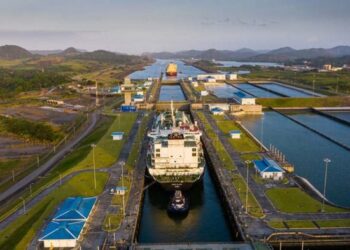After the failed terrorist attack, alternative routes to be considered
The reported failed attack on a container ship on August 31 raised frears among the maritime industry professionals as it shows an increased risk and immediate and sustained heightened security may need to be implemented onboard merchant vessels using the Suez Canal. As a result, some shipping companies may even consider alternative routes, such as the Panama Canal.
According toa Suez Canal Authority press announcement, on Saturday the terrorist act was directed to traffic at the Suez Canal. The terrorists targeted one of the ships going through the waterway, M.V. COSCO ASIA, hoisting the Panamanian flag. The attempt completely failed with no damage, whatsoever, either to the ship or its cargo of containers. A video showing allegedly the COSCO Asia attack in Suez Canal can be viewed here.
The General Command of the Armed Forces called for intensifying security measures along the waterway as well as its approaches and inlets. On September 1, 2013, 51 vessels transited the Suez Canal in both directions. The failed terrorist attack to blow up the containership was allegedly performed by activists of the Muslim Brotherhood.

Suez Canal : a key artery of the world trade
(Image Credit: Suez Canal Authority)
The Suez Canal, like that of Panama, is a key artery of world trade as reported in the Bulletin Panama. The alternatives, in a Suez shutdown, would the long journey around the Cape of Good Hope, the Russian Northern route, the Trans-Siberian system, new pipelines and the Panama Canal.
Suez and Panama
The Suez Canal and the intermodal system in the United States are the main competitors of the Panama Canal for world trade. The advantage of Suez and the intermodal system on the Panama Canal is that both allow the transit of huge post-Panamax ships, which today can not use the Panama route.
According to the Bulletin Panama, both canals have captive routes. In the case of Suez are the trade of Persian Gulf oil and containerized cargo between Southeast Asia and Europe. In the case of Panama, it serves the grain trade between New Orleans and Asia, as well as serving transport between the West Coast of South America and the East Coast of the United States.
But there is a huge trade between North East Asia (China) and the East Coast of the United States that has the option of choosing between Suez, the intermodal system and the Panama Canal. In this trade, the Panama route offers less time and cost than that of Suez, but today it is limited by the size of the existing locks. This limitation will be resolved when the expanded Canal begins operation in mid- 2015.




























































